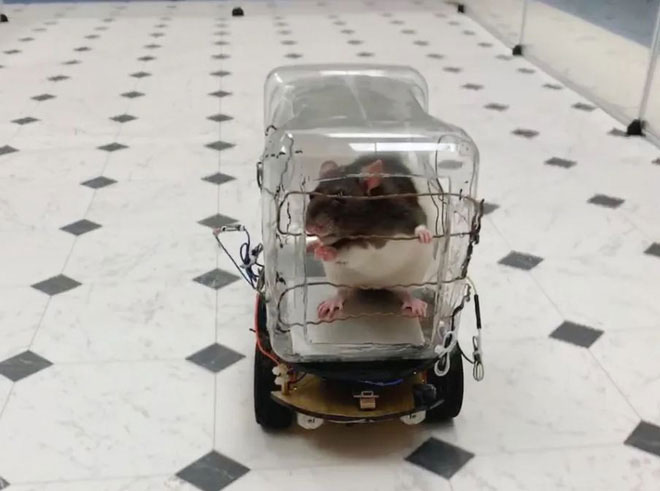The researchers built a tiny car to teach mice to drive
Driving a car has never been an easy job for many people. Yet at the University of Richmond (USA), scientists are conducting a very strange experiment: Teach the rats to drive the tiny car they built.
According to New Scientist, this homemade car is made from very simple items: The body of the car is a clear, empty plastic bottle shell, controlled by a tangled copper wire system. These ropes will allow the rats to control the vehicle like turning left and right with ease.
A total of 17 mice participated in this experiment. Their task is to drive to designated spots in an enclosed space. If successful, they will be rewarded with Froot Loops candy and other attractive dishes.
If you haven't figured it out yet, check out the video below published by the team at Richmond University:
Researchers at the University of Richmond make their own little cars to teach mice to drive.
Of course, when investing in an experiment that can be said to be unbelievable, the goal of the scientists cannot just be 'for fun'. Researchers at the University of Richmond say they hope they can gain a deeper understanding of how stress builds up in the brains of rats, which in turn connects to the human brain.
Specifically, from the faeces of 17 mice participating in the experiment, the researchers obtained two substances: Dehydroepiandrosterone - stress release agent; and Corticosterone - the substance that produces stress . The ratio between these two substances (in the same order) in the drool of active mice will be greater than the rest.
Technically speaking, mice that are more proactive, more autonomous, and are not overcome by their surroundings, produce less corticosterone. Related to the human brain, researchers believe that the desire to learn new skills will create positive substances.

Mice that actively control the car release more stress release.
In addition, mice raised in an environment with more to interact with will pass the driving test a lot easier. Their brains have the ability to adapt to toxic, heterogeneous challenges faster than other normal mice.
Professor Kelly Lambert, a neuroscience researcher explained that studying rats will be of great help in understanding the human brain, as the rodent's brain is essentially a session. our smaller version. And the experiment seems to have yielded quite satisfactory results for researchers at the University of Richmond.
Professor Lambert said: 'My students are excited to train rats in simple, old-school ways like this. And we were also pleased that the mice could use their homemade cars as a tool to move around and explore their surroundings. This is a great opportunity to learn and research . '
- The mole rats eat the mouse rat manure to get instructions for raising children
- Discover the unique, tiny bakery for mice in Sweden
- You plan to release genetically modified mice to deal with the rat pandemic
- Israeli students successfully built tiny satellites
- Scientists have created transparent mice
- Music will help your heart transplant mice live longer
- 1 TB drive is about to be celebrated for 50 years of hard drive birthday
- Transcend introduces USB drive with built-in digital camera
- Sony launches the world's smallest USB drive
- The truth is hard to believe: A pair of experimental mice can be as expensive as a billion-dollar car
- Scientists initially recovered sight for blind mice
- How to teach children under 6 to learn life skills?
 The US company is about to build a supersonic passenger plane of 6,000km / h
The US company is about to build a supersonic passenger plane of 6,000km / h Japan develops avatar robot as in fiction film
Japan develops avatar robot as in fiction film Australia tested the world's first mango picking robot
Australia tested the world's first mango picking robot America develops technology to separate water from animal waste
America develops technology to separate water from animal waste